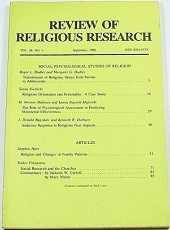James Kelly

Abstract
This paper uses the Churches’ responses to the controversy over abortion as a measure of the internalization of ecumenism. The data used in the essay include interviews with ecumenical officers and the minutes of the American Bishops Pro-life Committee. The main conclusion is that during the controversy “mainstream” Protestantism and Roman Catholicism reverted to post-Reformation and pre-Vatican II ideological roles, with Catholicism opposing under the banner of objective moral truth the legalization of abortion and liberal Protestantism under the banner of subjective conscience providing a belated religious justification to the legalization promoted first by secularist activists. This reversal to historic ideological roles actually distorted the more nuanced positions of these Churches in the controversy, but the lack of an ecumenical context obscured these shared tensions and prevented the Churches from contributing to a better public structuring of the moral ambiguities most Americans felt and still experience about abortion and the extent of its legalization. The essay concludes that only in an ecumenical context can religious pluralism lead to more inclusive moral commitments rather than to a further privatization of religion.
Kelly J. Ecumenism and Abortion: A Case Study of Pluralism, Privatization and Public Conscience. Rev Relig Res. 1989 Mar;30(3):225-235.

